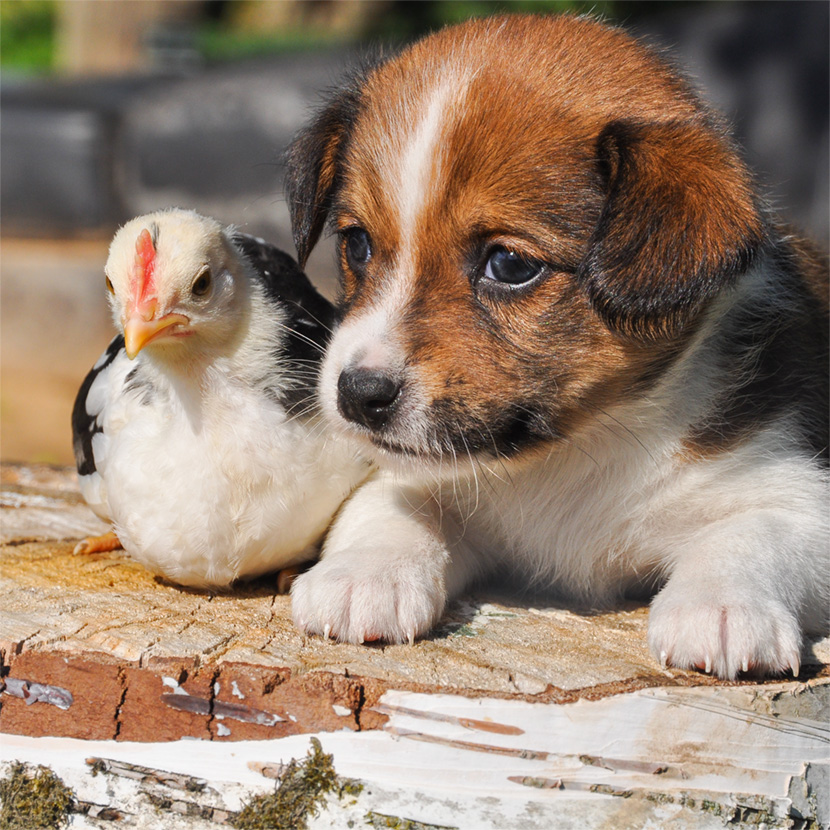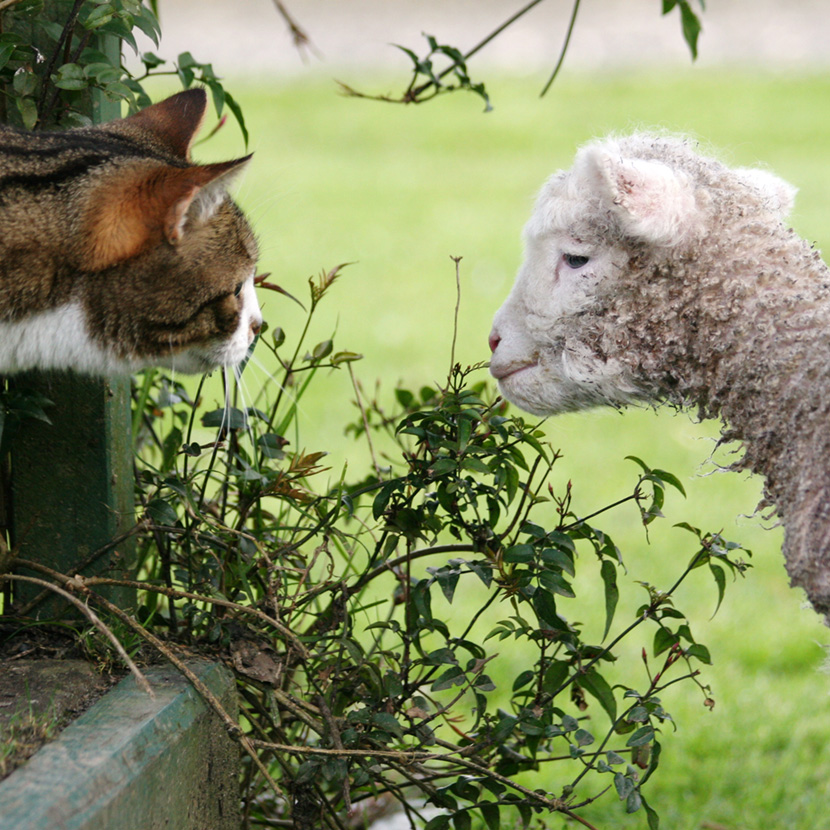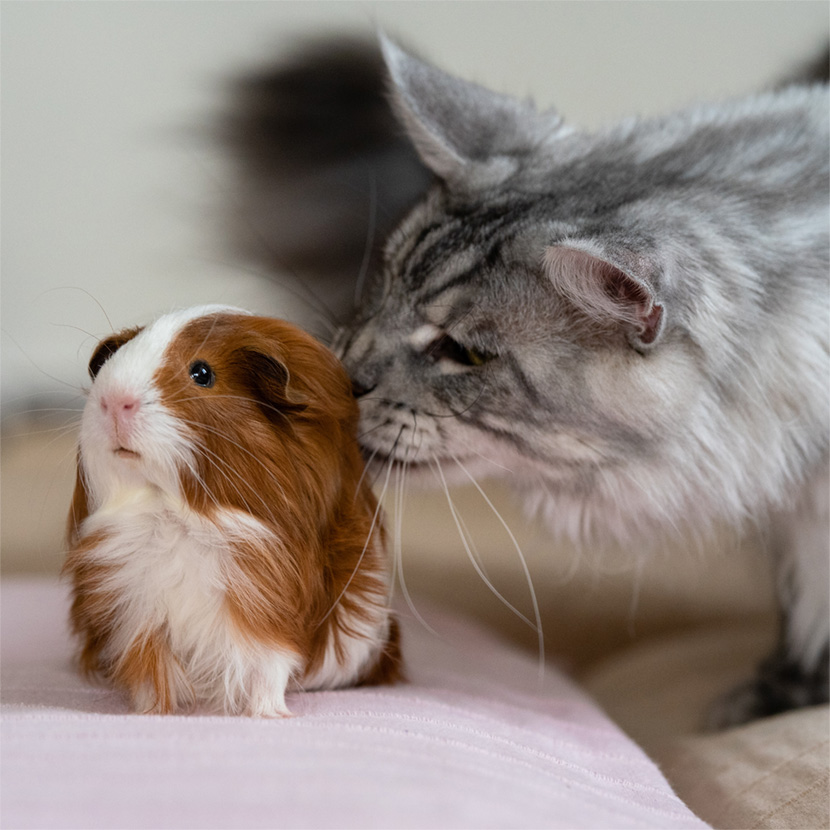ANIMAL WELFARE
When cows love cats

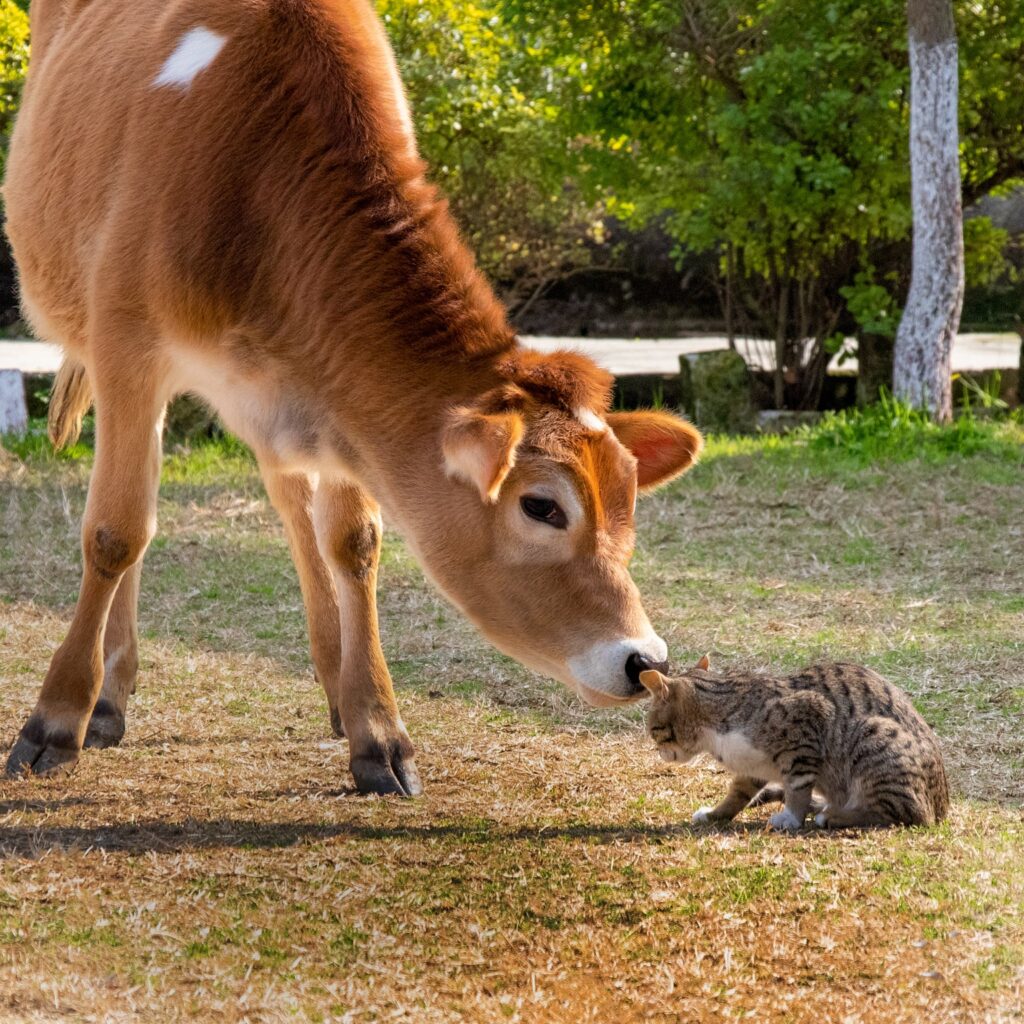
We all have that one friend who knows everything about us. Who listens when we’re full of crazy ideas or when we have the weight of the whole world on our shoulders. That friend we can call if our car breaks down on the motorway in the middle of the night. Whose door we knock on when we need a safe place to retreat to.
But we humans aren’t the only ones capable of real friendship and empathy. Friendships exist between animals, too. And they can exist between animals of different species, colors, sizes and destinies. Some animal friendships exist despite hardly seeming possible. It’s particularly touching when friendship between animals goes beyond differences in size, or assumed rivalries between certain species. When a predator snuggles up to its usual prey!
Hershey & Rhys – When animals are the best of friends
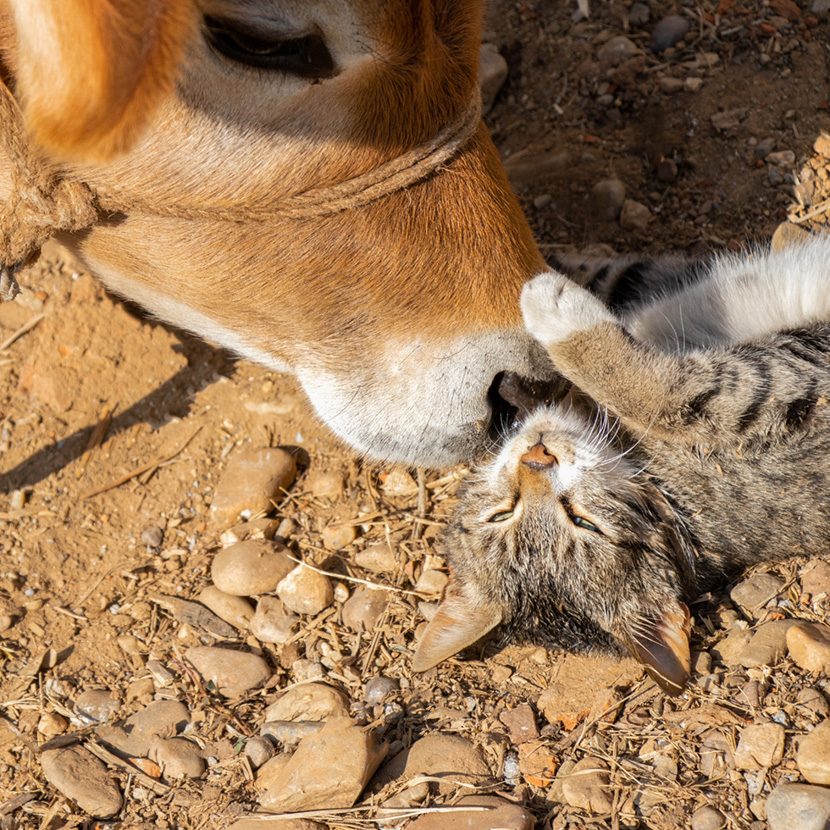
That’s the case with Hershey the cow and Rhys the cat from Indiana, who are from two animal species which have nothing in common – not just in terms of their size. One says meow, the other says moo. One loves meat, the other is a strict vegetarian. One is an agile hunter, the other a chilled-out ruminant. Their home – a farm – is the only thing the two four-legged friends have in common. Geographically, at least.
The shy cow and self-confident tom cat got to know each other at Sandy Powell’s farm, in the USA. Right from day one, shy calf Hershey had self-confident tom cat Rhys by his side. The young calf looked to his unusual companion to learn how to integrate into the community of animals, meaning he was able to settle into his new home more quickly. It was as though the tom cat had helped the calf to come out of his shell and cast away his shyness towards the other inhabitants of the farm. The two dissimilar friends have been inseparable ever since, and spend almost all their time together – this includes napping together and grooming each other. Meanwhile, the other cats, horses and donkeys on Sandy’s farm are treated civilly, but not accepted into their circle of friends.
So how do such heart-warming animal connections come about if the animals don’t even speak the same language? It’s clearly a case for science – which is increasingly looking at animals’ feelings, friendships and attachments. And that’s despite the fact that this field in particular has always been averse to what it sees as “portraying the animal world as being too touchy feely”. After all, for a long time, the science world regarded animals’ feelings as an unspoken taboo. It’s something that even famous researcher Jane Goodall experienced. She was criticized because she gave the apes in her studies names rather than numbers while she was working with them.
Animals’ feelings through the lens of science
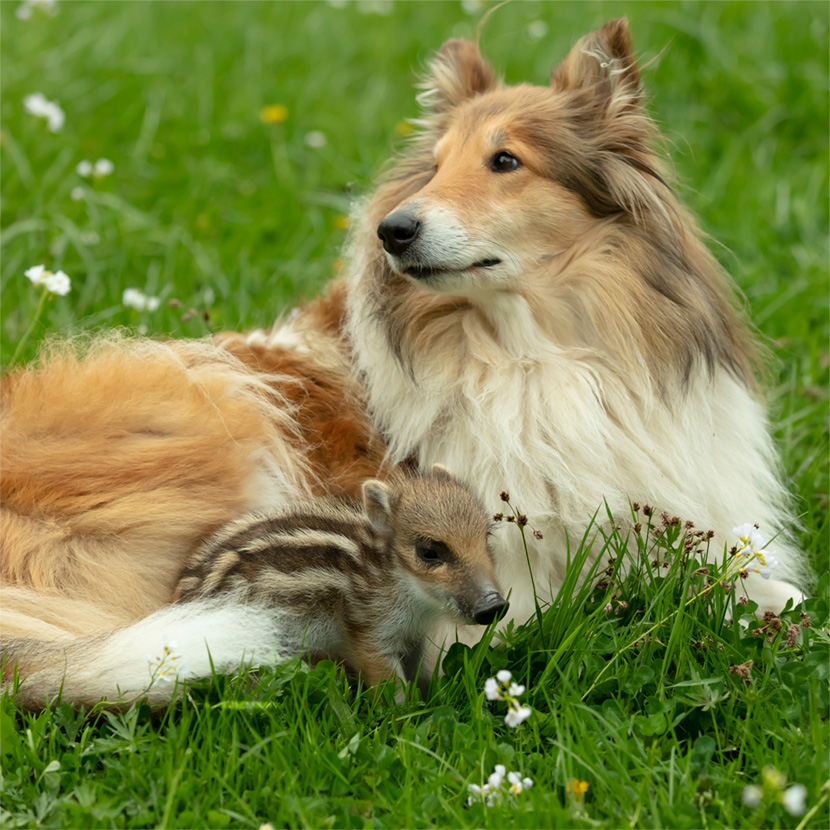
Science has come a long way since then. It has been proven not only that dogs, cats and apes have feelings – but that rats and mice have them too. In parallel, our knowledge of what livestock animals feel has also come on. Empathy in cattle, intelligence in pigs, or friendships between pets and livestock animals – gone are the days when phenomena like these would have been disregarded as “moments of daftness” – instead, they are regarded as proven facts with surprising intensity.
And yet, researchers haven’t suddenly become more sentimental than they used to be: they back up their work with logic and anatomical facts – for example the structure of the brain stem, the nervous system and how neurons transmit information. It’s for these reasons that behavioral biologist Marc Bekoff is one of many researchers who are convinced that, just like us humans, animals are able to feel grief, love, hatred, joy or sympathy.
This range of possible emotions also explains the animals’ ability to establish real friendships. While some connections are relatively easy to explain – for example when a young animal seeks protection from an older, larger ally – other animals surprise us with their choice of companions. The fact that supposed opposites attract and create inexplicable alliances is precisely what US biologist Barbara J. King considers as proof that animals are genuinely able to engage in friendships.
Real friendships are diverse
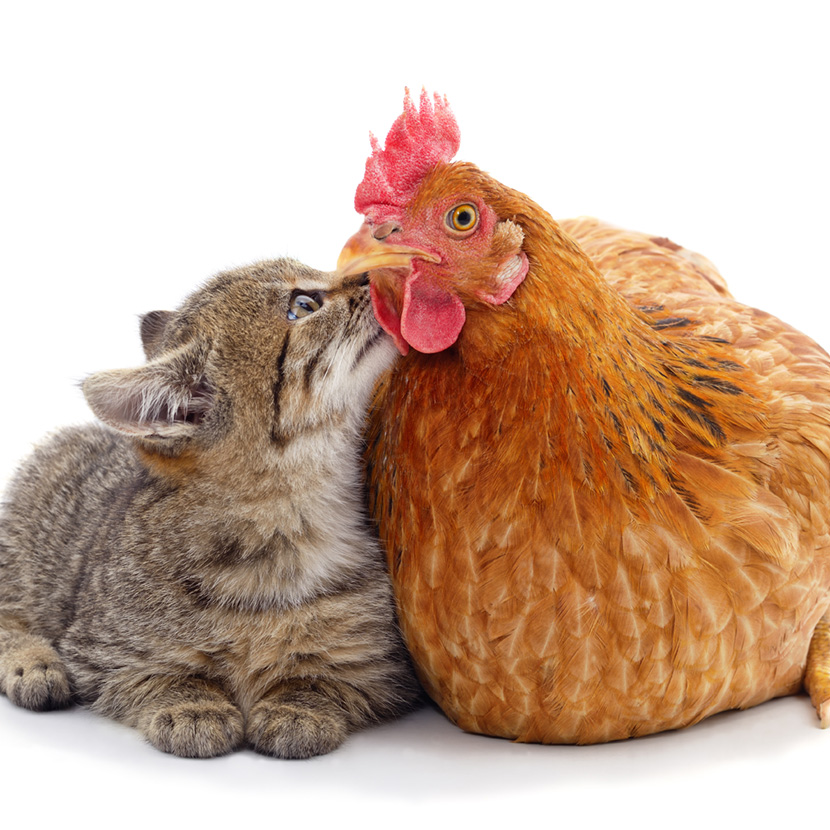
The diversity of friendships that exist supports the conclusion she comes to. Because, in the animal world, almost nothing is impossible – there are snakes sharing close quarters with hamsters, golden retrievers making friends with koi carp, and numerous stories of special relationships between pets and livestock animals, just like with Hershey the cow and Rhys the cat.
It’s connections like these that inevitably make us think about why, for one category of animals, we buy cuddly-soft baskets, luxury feed and toys, and love and keep them as members of the family, while we banish the other category of animals to gridded floors in joyless enclosures so we can have cheap meat on our plates and fresh milk on our cornflakes.
Logically, there can be no real reason for dividing animals along such lines. And maybe it wouldn’t be so bad if we all took a leaf out of our four-legged-friends’ books in terms of empathy, because their behavior shows us that life is about more than survival of the fittest. And that friendship isn’t a question of language, what we look like or where we come from, but something that touches our hearts and makes us happy.
